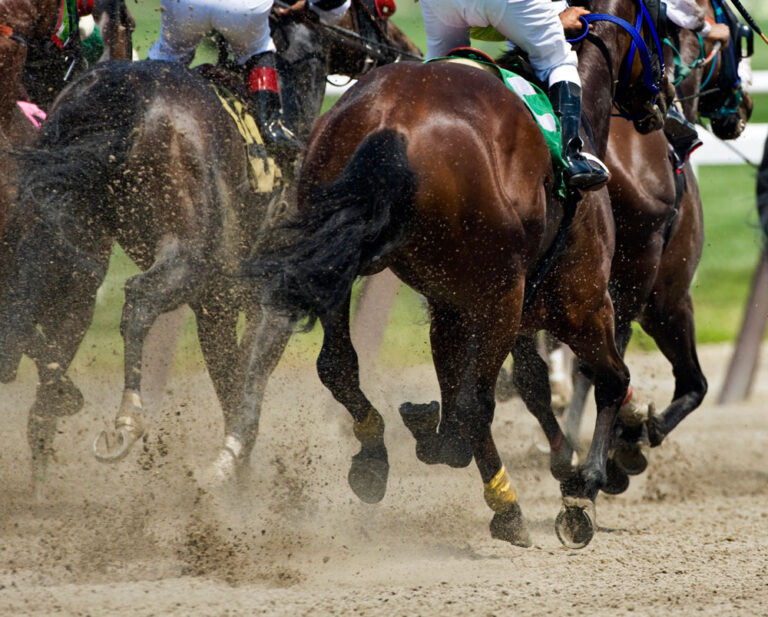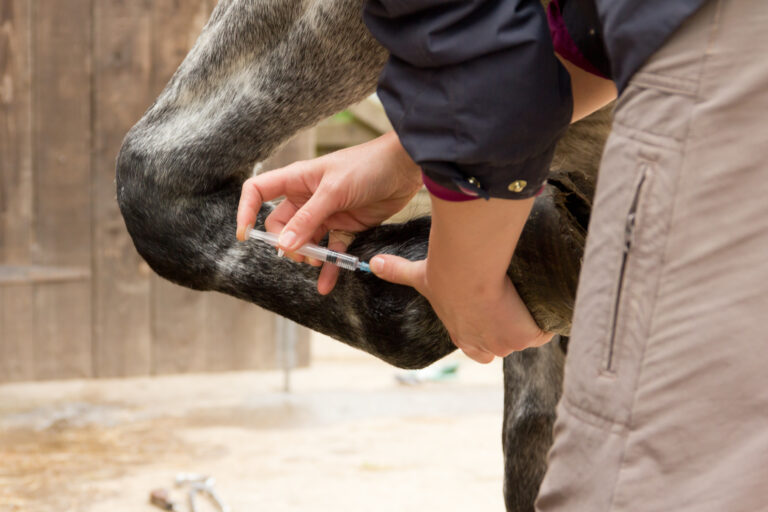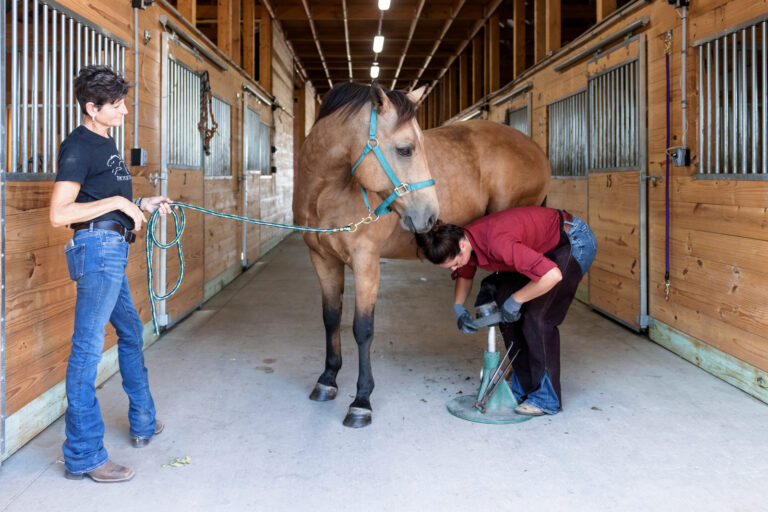
An injury to the semitendinosis (and occasionally the semimembranosous, biceps femoris, or gracilis) muscles in horses can result in biomechanical lameness with a shortened cranial phase of the stride. During the caudal phase of the stride, limb movement is abruptly altered such that the hoof seems to slap the ground. Most cases are a result of blunt trauma, slipping or falling events, or sprint takeoffs that leave scar tissue within the affected muscle. In unusual cases, an intramuscular injection of irritating substances might create scarring, or a rare degenerative atrophy can occur as another cause.
For the most common area of concern, tenotomy of the semitendinosis muscle is the surgery of choice.
Standing Myotomy Study
A retrospective study at the University of California examined horses undergoing a standing semitendinosis myotomy procedure between 2004-2016. The authors discussed use of a standing procedure and post-operative outcomes.
This standing procedure is appealing for its cost effectiveness, avoidance of general anesthesia risks, and decreased surgical duration. A surgeon is also able to evaluate the results of the myotomy by walking the horse out of the stocks mid-procedure.
Twenty-two horses received this surgical procedure for fibrotic myopathy. Ten of the 22 horses had experienced a traumatic event, and one horse experienced a post-injection abscess. The other 11 horses had no discernible etiology for their fibrotic myopathy. The caudal thigh muscles were examined with ultrasound to identify the fibrotic area within the muscle belly that contributes to limb restriction. This ensured accuracy of surgical location.
Rehabilitation Following Standing Myotomy
At least two months of controlled exercise and stall confinement were implemented post-operatively:
- Hand walking for 10 minutes three times per day until suture removal at two weeks post-op.
- Trot for five minutes per day, which increased by five minutes per week, including on gentle hills until four weeks post-op.
- Then, canter added at two minutes per day and increased by two minutes each week.
- During the entire two months post-op, owners were to perform passive range of motion exercises for five minutes twice a day.
- Then horses could be turned out to pasture and/or kept in work after this initial rehab period.
Post-Surgery Outcomes
Follow-up with 16 of the 22 owners covered periods from six months to 11 years post-surgery.
- Thirteen of 16 owners were satisfied with the immediate outcome.
- Ten of 16 owners were satisfied with the long-term outcome.
- Eight of the 16 horses developed recurrent signs after two months of rehab.
- Four of those eight were put in pasture after the rehab and signs recurred. These horses were not intended to return to athletics; the surgery was done for their comfort.
- The other four required surgical revision. Three did not improve, and one returned to its intended use.
In summary, eight of 12 athletic horses were able to return to their athletic pursuits while the other four were retired to pasture. Of the 16 owners, 10 said they would recommend the procedure to others, with five stating yes “without caveats.” The rehabilitation process and duration are critical to achieving success from the procedure.
Reference
Noll, CV.; Kilcoyne, I.; Vaughan, B.; Galuppo, LD. Standing myotomy to treat fibrotic myopathy: 22 cases (2004-2016). Veterinary Surgery 2019; 1-8; DOI: 10.1111/fsu.13209
Related Reading
- Causes of Immune-Mediated Myopathies in Horses
- Diagnosing Performance-Limiting Muscle Diseases in Horses
- Approach to Horses with Poor Performance
Stay in the know! Sign up for EquiManagement’s FREE weekly newsletters to get the latest equine research, disease alerts, and vet practice updates delivered straight to your inbox.




